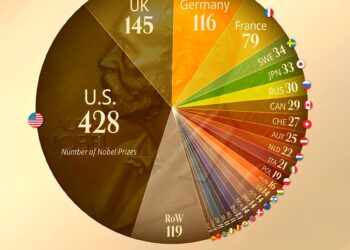Select Language:
Industry analysts suggest that the recent short-term decline in gold prices does not signal the end of the metal’s long-term upward trend. On October 21, international gold prices dropped by 5.3% to $4,124.36, marking the largest one-day decline of 6% since April 2013. Correspondingly, Chinese gold futures for December expiry decreased by 4.2%, settling at approximately CNY952.56 (around USD133.70).
The decline was driven by improved trade relations and easing geopolitical tensions, along with a resurgence in the US dollar index and investors taking profits. Experts interpret these fluctuations as temporary responses to recent developments, including progress on a ceasefire between Russia and Ukraine, hopes for reduced tariff disruptions, the potential end to the US government shutdown, and an overextension in gold prices on the short-term chart.
The recent dip can be explained by two key factors. Firstly, the rapid price surge had become excessive, signaling a need for technical correction. Secondly, any upcoming resolution to the Russia-Ukraine conflict could exert downward pressure on gold prices, according to a financial advisor.
In comparison to the 2011 gold bull market, this current rally is underpinned by major central bank purchases worldwide, geopolitical instability, and a diminished faith in the US dollar amid high national debt levels. Despite today’s volatility, the fundamental outlook remains positive. Many believe that gold prices will continue to reach new heights over the medium to long term, despite possible short-term setbacks.
Expectations are that gold will maintain upward momentum until 2026, supported by ongoing central bank buying, US fiscal uncertainties, and prospects for further monetary easing. A recent forecast by HSBC projects gold prices could hit $5,000 per ounce next year.
The trend of central banks holding more gold is expected to carry on, driven by abundant global liquidity and the ongoing process of de-dollarization. This shift is likely to sustain a relatively strong gold market into the future, according to industry experts.
As the Federal Reserve has lowered interest rates as anticipated, investors are becoming more confident that further cuts may be forthcoming, providing additional support for gold investments. Meanwhile, the ongoing movement away from the US dollar—amplified by rising deficits and waning confidence in US debt—further undermines the dollar’s dominance, possibly reinforcing gold’s appeal in the years ahead.






